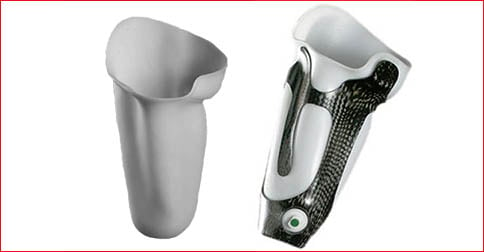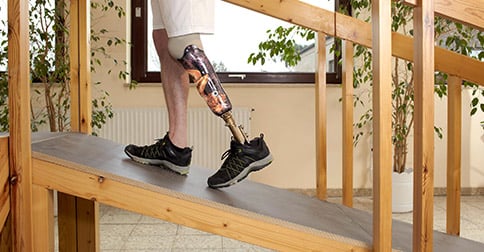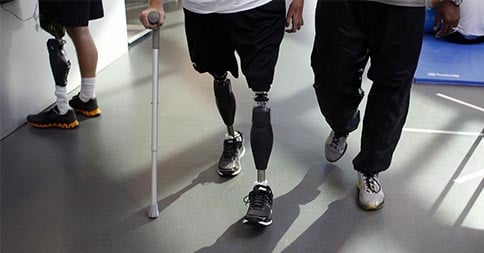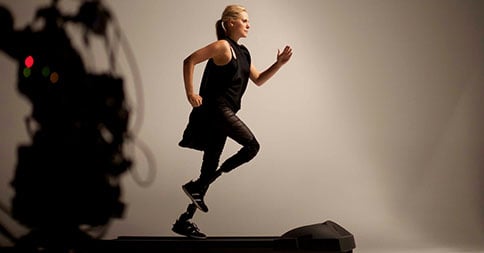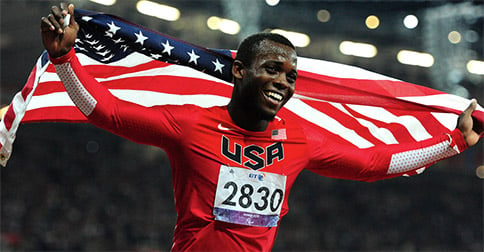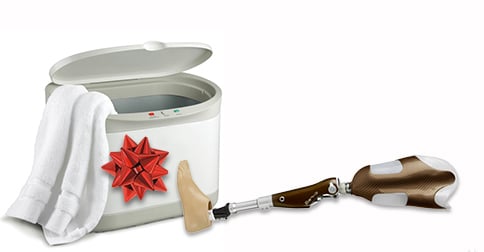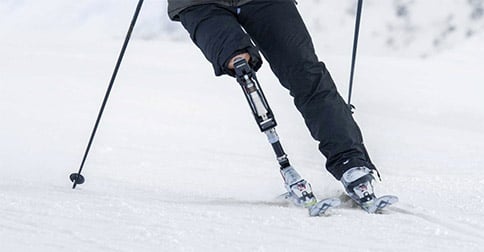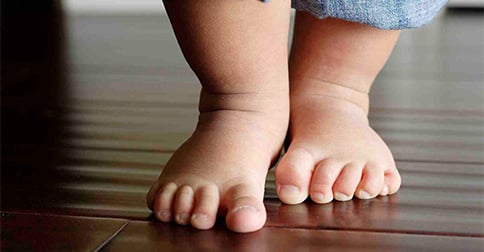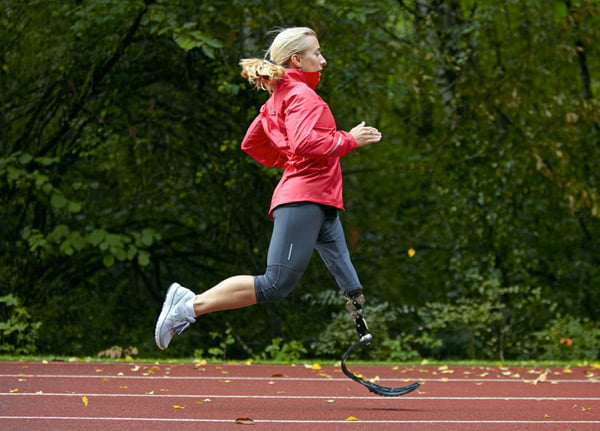A prosthesis helps restore the function and appearance of your missing limb. At BioTech Limb and Brace, we realize the importance of each part of a prosthetic device. From the control system at its foundation to the aesthetically pleasing finish, your custom prosthesis should help you recognize new possibilities! Learn more about the anatomy of a prosthetic device.
Lightweight Prosthetic Leg Device
The fabrication of a lightweight prosthetic leg device is an intricate process that requires a high degree of skill and technology. The materials that make up your prosthetic device must be durable enough to balance your body weight and the flexibility of your movement. At BioTech, each prosthetic device is custom-built for each patient. Our end goal is to make sure your limb fits perfectly and provides you with a new level of convenience.
The Control System
What once started as a wooden extension of the leg has now developed into a more sophisticated device that mirrors a natural human limb in capability, flexibility, and appearance. Prosthetic limbs are more complex than they may seem. At the core of any lightweight prosthetic leg is the control system, some of which have smartphone integration. The lightest limbs are made with carbon technology.
BioTech Comfort Socket
Attached to your residual limb is your socket, which ensures comfort and flexibility. The ideal comfort socket is transfemorally designed with the wearer in mind. Because the socket is the connection point between your residual limb and your prosthetic device, it is arguably the most important part of your device.
Trust the experts at BioTech Limb and Brace in Birmingham, Alabama!
BioTech Limb and Brace was founded in Birmingham over fifteen years ago. Our personal, caring, and passionate team remains focused on our patients, whose comfort and success is our first priority. Learn more about our services and the products we offer at BioTech. Contact our experts today!
If you are new to limb loss, the transition can be hard--but you can recognize your possibilities with BioTech! Maximize your experience with orthotic and prosthetic devices by following these simple tips.
#1: Clean and Care Properly
Cleaning your prosthesis can be tedious, but it is a vital part of caring for your device. First, use a towel to apply baby powder to the inside of the device, reducing moisture after wear. As for your residual limb, check every day for irritation and bruises. To help protect your limb after limb loss and reduce swelling while you sleep, you can wear a comfort socket.
#2: Wear Your Prosthesis Daily
If you are new to prosthetic technology, wearing your device daily may seem uncomfortable and awkward at first. However, the more you wear your prosthesis, the more you will get used to it. Soon, you’ll see an improvement in your functionality, and your device won’t feel quite so foreign.
#3: Eat and Exercise
Managing your diet is important, especially when it comes to regaining strength in your muscles. Stronger muscles help you regulate your gait, so give them the nutrients they need!
In addition to eating well, you need to exercise regularly. Your professional physical therapist can suggest a tailored exercise routine that fits your life and your needs. A sedentary lifestyle is not recommended, as it can result in an increased BMI and discomfort due to your residual limb fitting poorly into your prosthesis.
#4: Forward Focus
Getting used to wearing a new prosthetic device can be physically and emotionally overwhelming. Keep your head up! With a little patience, plus the help of caring professionals, you will be on the right path in no time.
BioTech Limb and Brace Will Get You There!
Recognize your possibilities with BioTech Limb and Brace in Birmingham, Alabama. Our passionate staff delivers excellent service and quality treatment solutions. Learn more about BioTech. Contact our team today!
Gait refers to the way a person walks from speed and step length to posture and limb positioning. Those who have experienced amputation or limb loss often find it challenging to regain a normal gait pattern. In this case, “normal” refers to a pattern that is symmetrical and fits in with the average pattern.
The more invasive the amputation, the more likely a patient is to experience a limp. Muscles may lose their strength, and sensory receptors may stop working. For this reason, a patient may appear unstable and unbalanced.
How to Maintain a Normal Gait Pattern
It takes a great amount of energy to compensate for weakness in your gait pattern. For this reason, it is important to talk to your orthopedic specialist about appropriate pre- and post-amputation exercises. Therapeutic exercises will help you regain stability.
Using parallel bars, walkers, crutches, or treadmills, many patients who wear a prosthesis or other orthopedic devices learn to walk with a cane, and then with no aid at all. No matter how long you have worn your orthopedic brace or prosthetic device, it is vital to periodically check on your gait pattern.
For athletes, gait pattern is extremely important. If you wear a running prosthesis, your gait may be different when you are running versus when you are walking. With help from professionals, you can work on both patterns.
BioTech Limb and Brace in Birmingham, Alabama has the experience you need!
The passionate professionals at BioTech Limb and Brace have years of experience with patients of all ages. Our goal is for every patient to receive custom, tailored care. Learn more about how you can benefit from seeing a BioTech specialist. Contact BioTech Limb and Brace today!
We often look to celebrities to inspire us, to act as role models - and to serve as examples of what we can be when we recognize our possibilities, no matter what our circumstances may be.
For those who have experienced limb loss, Aimee Mullins is one such example. Aimee is a well-known model and actor who has built her career on advocating a new perspective on prosthetic devices for women, men, and children alike.
Learn about her journey, her success, and her innovative vision as a limb loss survivor and role model.
Aimee Mullins: Amputee
Aimee was born without her fibular bones and had both of her legs amputated below the knee. She began to walk on her first pair of prosthetic legs at the age of two.
Even from an early age, Aimee didn’t let limb loss define her or limit her. Like athlete Blake Leeper, Aimee found an affinity for sports at a young age and began wearing running prosthetic legs. She tried softball and soccer, swimming and skiing, excelling in a variety of activities. At seventeen, she graduated high school as the youngest person allowed top-security clearance at the Pentagon, with a full scholarship from the Department of Defense.
Sports Star and Model
During her time at Georgetown University, she became the first-ever amputee - male or female - to compete as an athlete in the NCAA. She began setting records nationally and internationally as a champion Paralympic sprinter and double amputee as she grew. At the same time, she began her modeling career, which then flourished into an acting career. During this time, she accepted the role of official Ambassador for the ESPN Tribeca Sports Film Festival and starred in Matthew Barney’s Cremaster 3, an avant-garde film.
Advocate and Ambassador
Aimee had an extraordinary vision. Instead of developing prostheses with human-like features, she looked into the abilities of animals. She was then outfitted with the first running prosthetic device modeled after a cheetah’s legs. Those legs now act as prototypes for many sports prosthetic devices. Her unique designs and creative vision are unparalleled.
Named one of People magazine’s “50 Most Beautiful People in the World,” Aimee represents L’Oreal Paris as their Global Brand Ambassador and continues to hold notable positions in organizations like Women’s Sports Foundation.
Additionally, Aimee has become an accomplished speaker. Her TED Talks are some of the most viewed in the history of the conference, and have been translated into 41 languages so they can share her inspiration around the globe.
Achieving Success like Aimee
Many of Aimee’s remarkable achievements come not only from her determination and spirit, but also from the prosthetic devices she has worn, which have expanded her horizons and given her the same capabilities as anyone else.
BioTech Limb and Brace in Birmingham, AL specializes in designing and developing prosthetic and orthopedic devices that allow people to go above and beyond whatever limitations they think they have due to limb loss. We like to show people that you are never limited - just like Aimee.
Contact our experienced team of professionals to start recognizing your possibilities today!
The Paralympic Games are a shining example of all that is good in this world. They feature athletes who, despite their physical limitations, rise above and recognize their possibilities. One Paralympic athlete, Blake Leeper, is an example of this determination in the face of adversity.
Blake Leeper was born in Kingsport, Tennessee. Neither one of his legs developed below the knee. Thus, he’s worn prosthetic devices since he was only nine months old.
Doctors told him that he would never be able to walk, but at a young age, his interest in sports was piqued. At the age of nine, he received his first pair of “real legs,” as he calls them, and he was more than walking in no time. He took a particular liking to basketball, and he became very active on the court. In no time, he got his first custom running prosthetic device and the possibilities became limitless.
Pursuing Athletic Excellence
Blake credits his supportive parents for his success. At a young age, they told him that he should never let his disability define him. With the help of his running prosthetic legs, he was capable of recognizing his possibilities by participating in the Paralympic Games.
Blake has been quoted as saying, "The only true disability in life is a bad attitude." He got his start when he attended the University of Tennessee and qualified for the Paralympic race in the 2012 Paralympic Games which were held in London, England. He then set a world record in 2014 at the World’s Paralympic Championships in the 4x100 relay.
In 2009, 2011, and 2012, Blake won medals for his performance in the World Championships and the Paralympics in a variety of events, ranging from the 4x100m relay, the 200m sprint, and the 400m run.
At only twenty-five years old, Blake was shooting and dribbling his way to Madison Square Garden as the first double-amputee to grace an official NBA court during the 2015 NBA Celebrity All-Star game.
Moving Forward: the Future
Blake continues to use his success to do good in his community and the nation as a whole. He works with fundraising teams and awareness organizations to help others with disabilities. He is also rumored to be the star of a modern documentary following his life, past and present, entitled, “American Blade Runner: the Road to Rio.” The dream is that through this film, his story will hopefully inspire millions of viewers to rise above and achieve their dreams no matter what limitations they may have.
Recognize Your Possibilities with a Running Prosthetic Leg
We are committed to personal service and patient satisfaction at BioTech Limb and Brace in Birmingham, AL. We would be honored to help you recognize your possibilities today with the help of a running prosthetic leg or an orthopedic device.
At BioTech, each patient is like family. We are committed to ensuring that your experience with us is personal and encouraging.
As the holiday season approaches, it is time for gift giving! If you have a friend or a family member that has experienced limb loss, then there are many practical gifts you can include in their stockings!
Check these ideas for this Christmas presents for amputees from BioTech Limb and Brace in Birmingham - Alabama’s designation for proper fitting prosthetic and orthotic devices.
#1: Baby Wipes and Baby Powder
Whether you are sending a care package or simply stuffing a stocking, a little box of baby wipes goes a long way to help keep prosthetic and orthotic devices clean. A bottle of a baby powder can also help since baby powder is good for keeping moisture to a minimum, making it more comfortable to wear a prosthetic or orthotic device during long periods of activity.
#2: Lotion and Lubricant
Sweat is well combated by baby powder; however, sometimes it is easy for the residual limb to feel dry during the colder months. Lotion can help keep skin moisturized, which can improve comfort.
When skin can get cold and dry, it can sometimes be harder to fit into a prosthesis in the winter. For this reason, a bottle of lubricant is a smart purchase that can be very practical for friends and family members with limb loss.
#3: Towel Warmer
If you feel like getting fancy, consider giving your friend or family member a towel warmer. This luxurious product will help them keep their liners and comfort socks warm before putting them on in the cold winter mornings.
#4: Socks, Socks, Socks!
Don’t we all love socks in our stockings? Consider gifting a nice, warm pair of fuzzy or fleece socks. Lower extremity residual limbs can get cold, especially during chilly winter nights. Many retail stores even carry socks that are lined with a soothing gel that are perfect for long days.
BioTech Gives the Gift of Possibility
Learn more about who we are and how we help patients recognize their possibilities everyday. Through personalized care and modern technology, we strive to give each patient an excellent experience. Contact BioTech Limb and Brace today to learn more.
Winter can be a slippery, sliding time for many of us. For those of us wearing prosthetic legs or orthopedic braces, the extreme weather can pose a threat. So, how do you stay safe and warm and not feel itchy or uncomfortable? Follow these tips from BioTech Limb and Brace!
#1: Get Gear with a Grip
When we’re talking about staying safe in the winter - when weather gets nasty - it all comes down to grip.
Resist sliding on ice or in snow by making sure that all of your shoes have good grip. No matter the weather, good traction will keep you safe and keep your feet on solid ground. Flats or sneakers with rubber soles will keep you stable - just don’t try heels outdoors! If you are going to experience severe weather, consider investing in snow shoes, weatherproof boots, or ice cleats.
To ensure comfort even under layers of wool and fleece, learn more about custom BioTech comfort sockets. Gel liners for your prosthetic leg will also keep you both warm and comfortable, even in harsh weather. Your flexibility and range of motion will improve, and overall you will simply be more comfortable.
#2: Stay Warm
Beyond footwear, your prosthetic leg or hand must be worn at all times in the cold. If your orthopedic professional suggests that you wear a knee or leg brace, make sure that you do not skip a day during the winter. Especially during this season, if your residual limb is left uncovered, you may experience pain and irritation. Cold weather can leave your extremities in a lot of pain, due to barometric pressure, if you are not careful.
If you have experienced limb loss due to natural causes or surgery, maintaining body warmth, no matter your Body Mass Index, is important. Warm layers and adequate material like waterproof jackets and appropriate footwear will keep you comfortable in the cold.
#3: Talk to Your Therapist
At BioTech Limb and Brace in Birmingham, AL we are committed to excellent service and patient satisfaction. We are thrilled to have the opportunity to form new relationships with patients, because we consider everyone who comes to visit family. During this holiday season, we are reminded of how grateful we are for our patients and for modern technology that helps us recognize possibilities for those patients everyday.
Learn more for yourself by checking out our latest blog or contacting a personal professional on the BioTech team today.
Every day, children are born with various orthopedic conditions that can seriously affect their lives if left untreated. Is your baby showing symptoms? When do you need to look into treatments? Learn more about the four most common conditions from BioTech Limb and Brace in Birmingham, Alabama.
#1: Toe Walking
As toddlers begin to walk, many develop a “toe walk.” This is not always a cause for concern, but you should certainly pay attention because sometimes toe walking is related to conditions like autism and cerebral palsy.
If the toe walking in your toddler becomes persistent, you should consider visiting an orthopedic specialist. Often, physical therapy and exercise can help reduce toe walking, with many toddlers outgrowing toe walking completely. If not, there may be an underlying neurological problem that needs to be treated separately.
The best way to determine the cause and treatment for toe walking in your little one is to visit BioTech Limb and Brace in Birmingham, Alabama.
#2: Intoeing
Intoeing is not to be confused with toe walking. Intoeing is sometimes seen in babies and children and is often referred to as being pigeon-toed. Children who walk with their toes turned in toward each other often outgrow intoeing by the time they are adolescents. For this reason, treatment is not usually considered.
For children with severe intoeing or associated pain, there are corrective shoes and custom orthotic knee braces that can be worn to help speed up the process. If your child is having trouble walking, a pediatric orthopedic specialist at BioTech can help you determine the best type of treatment for your little one.
#3: Flat Feet
Every person has a different amount of arch to their feet, however no arch is a problem. Believe it or not, quite a few babies are born with flat feet. Although this, too, is typically outgrown after about six months, if you notice your child experiences pain when walking then it is important to see a medical professional about orthopedic shoe supports.
#4: Bowlegged
Some children, while in the womb, are folded before birth. These children are often bowlegged as a result. This means that their legs bow outward around the knee. Typically, their legs will straighten out on their own by about three or four years old. It is actually a normal part of development in most children. However, some children can have more severe alignment problems that need treated.
Growth abnormalities, trauma, or disease can cause a child to remain bowlegged for years beyond infancy. It is important to have a specialist take an x-ray to determine the best solution for your child. Any type of torsion of the bones, like tibial torsion (twist of the shin or knee), can cause the condition to worsen. If it is not treated, or if it is getting worse, bowleggedness can lead to osteoarthritis.
Corrective shoes, prosthetic or orthotic knee braces, and castings can typically help; however surgery may also be a potential solution.
Consult the Experts at BioTech Limb and Brace
If you’re ready to talk to a specialist and receive the personal care you little one needs and deserves, contact BioTech Limb and Brace today.
Our pediatric specialists will help you diagnose, care for, and treat your child, helping to provide a healthier and more comfortable life. We believe in building meaningful relationships with each of our patients, and we would love to have the opportunity to help you today.
Prosthetic devices can be life-changing, especially for those with limb loss who lead very active lives. Believe it or not, these prosthetic legs go beyond practicality; they provide more than comfort and function. Keep reading to learn more!
With a dedicated team behind you and a custom-fitted prosthesis, BioTech Limb and Brace helps our patients recognize their possibilities and continue to live active lives!
Inspiring Patients
We absolutely love working with our patients and seeing them accomplish incredible things with the new devices. We are continually inspired by their perseverance and tenacity.
For example, Danielle has been with us for thirteen years. As a teenager, Danielle’s running prosthesis allowed her to participate in high school athletics and equestrian sport. Take a minute to learn more about Danielle’s inspiring story here.
Quin, a student-athlete, has been part of the BioTech family for approximately one year. Quin’s story is truly incredible! A thirteen-year-old in love with baseball came to BioTech to get a custom engineered running prosthetic leg. Within months, he achieved more than we could have ever imagined. He was running in the parking lot the day he tried it on. Take a minute to learn more about Quin’s journey.
A Prosthetic Advantage
Running prosthetic legs enable our patients to run using significantly less energy than able-bodied athletes. The difference is actually greater than you might think.
During a run, there is a loss of energy that comes with the push-off of the foot from the ground. With a prosthetic leg, that loss of energy is substantially less, which adds more power to each stride.
As you run, your body sends energy into the ground, receives some of that energy back, and then pushes forward from that energy. The stiffer the leg, the more energy is returned. For this reason, a running prosthetic can actually give you an edge on the competition!
Professional runners run with less vertical force and movement, which means they don’t bounce up and down as much as amateurs. Therefore, they conserve more energy, thereby increasing stamina and reduce fatigue.
Get Into Your Running Prosthetic Leg Today
At BioTech Limb and Brace, we consider all of our patients family. We would love to help you recognize your possibilities and live healthier, more active lives!
Learn more about our advanced technology and custom fitted prosthetic or orthotic devices. Contact us today.
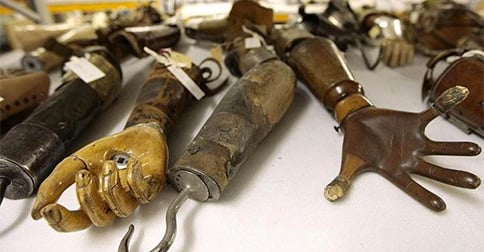 Technology today offers millions of patients a new chance at a healthy life. Prosthetic devices and orthotic devices have changed the face of medicine.
Technology today offers millions of patients a new chance at a healthy life. Prosthetic devices and orthotic devices have changed the face of medicine.
So, how did it all start? When did these devices begin to change lives, and what were they first made of? Learn more about the history of prosthetic devices with BioTech Limb and Brace in Birmingham, Alabama.
The First Prosthetic Device
It is claimed that the very first artificial limb prosthetic device was actually not what you might expect. It was a toe! Legend has it that thousands of years ago, a wealthy woman in Egypt lost her toe and could no longer wear traditional Egyptian sandals. To help her maintain her identity and function, the first prosthetic device, a wooden toe, was created. From there, technology (thankfully) has only progressed.
Military Accounts of Prosthetic Devices
Most accounts of prosthetic technology advancement following Egypt come from military stories. Many soldiers have lost their arms or legs during war resulting in a need for artificial limb prosthetic devices. Starting in the early sixteenth century, early prosthetic devices were built from wood and then iron. Soon designers began mixing materials and other metals to create more durable and yet flexible options.
Added Flexibility with One Important Innovation
Ambroise Paré, a French barber surgeon, was responsible for many advances in amputation surgery and prosthetic technology. He was the first person to develop hinged prosthetic devices. These allowed patients to move more freely and naturally, even while wearing their prosthetic limb. Not only were patients now able to feel support and comfort; they were also given increased functionality.
Today’s Technology: Advancing Prosthetic Use
Advancements in artificial limb prosthetic devices have dramatically changed lives over the years. Today technology has come so far. It’s exciting what we can do! From transfemoral designed comfort sockets to custom prosthetic devices and orthotic devices, modern technology allows patients to have strong, light, flexible devices that enhance their lives. These devices give patients a sense of wholeness, functionality and flexibility, and comfort and support.
The BioTech Difference
At BioTech Limb and Brace, we work hard to make every patient feel like family. We want to help you recognize your possibilities with custom prosthetic and orthotic devices.
Contact us today to learn more and experience the BioTech difference.
